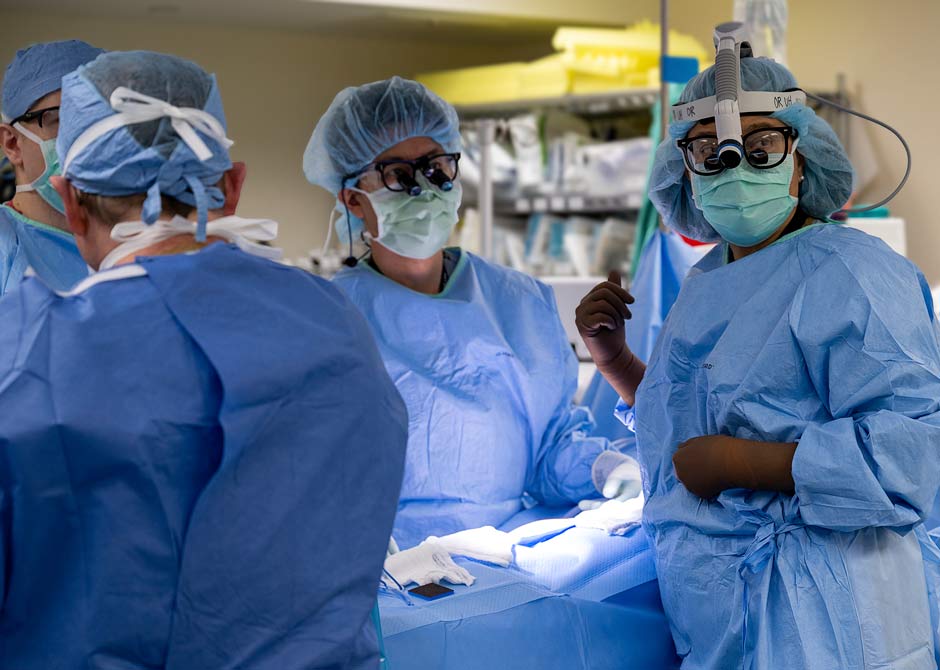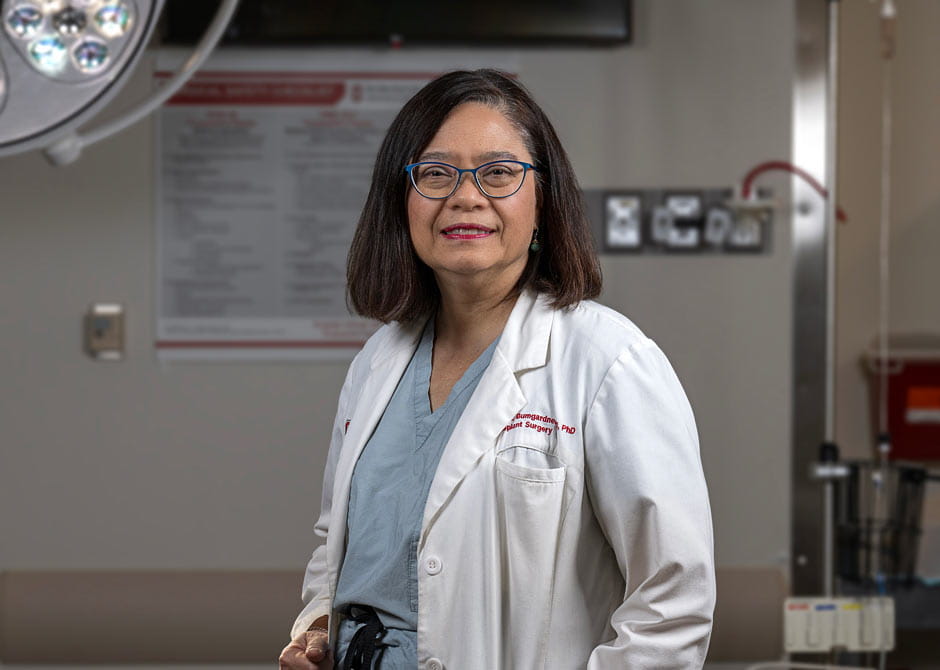 When Ginny Bumgardner, MD, PhD, talks about how she became a transplant surgeon, she mentions faculty members at each turn who helped her find her way.
When Ginny Bumgardner, MD, PhD, talks about how she became a transplant surgeon, she mentions faculty members at each turn who helped her find her way.
The instructor who sparked her interest in how the immune system works. The professor who helped her find a residency with a strong transplant program. The transplant surgeon she worked alongside in the operating room and in the lab – a woman in a field with very few women.
On the path to becoming a surgeon and a researcher, Dr. Bumgardner had many mentors.
From several of them, she realized the value of doing research along with being a surgeon. A little more than a decade into her career as a transplant surgeon, Dr. Bumgardner developed the first structured research program for surgeons at The Ohio State University College of Medicine.
She would go on to enhance access to the master’s degree program in medical science for resident doctors and fellows to encourage them to engage in formal research.
Teaching the next generation
Over the years, Dr. Bumgardner has mentored countless medical students, helping them learn to evaluate biomedical studies and do research, adding another dimension to their work helping patients live healthier and longer lives.
Mentoring comes naturally to Dr. Bumgardner.
“Every accomplishment of any of the trainees is just a joy for me – every time,” says Dr. Bumgardner, a professor of Surgery in the Division of Transplantation Surgery at the Ohio State College of Medicine. “It’s sort of a relationship forever.”
While generous in her support of others, Dr. Bumgardner has also contributed to the field through her own research findings and by extending the lives of so many patients with donated kidneys, pancreases and livers that she transplanted.
Digging deep into why transplants fail

When she started out in the field, Dr. Bumgardner was curious why sometimes a transplanted organ that initially worked well would later fail. That’s long been a critical issue to solve.
A transplanted organ can fail for several reasons: blood clotting, infection, problems with the donated organ and other issues. But one of the most challenging reasons is the patient’s immune system reacting to an organ their body considers foreign.
As a resident physician at the University of Minnesota, Dr. Bumgardner would learn how to transplant organs and how the immune system reacted to donated organs. She worked closely with Nancy Ascher, MD, PhD, the first woman ever to perform a liver transplant surgery.
Dr. Bumgardner was part of Dr. Ascher’s research team when it made the discovery that a patient’s immune system reacts not only to the immune cells circulating through the donor organ, called passenger leucocytes, but also to the parenchymal cells within the transplanted organ that are crucial for it to function.
Before that discovery, strategies to prevent an organ from failing focused primarily on eliminating the passenger leucocytes in the transplanted organ.
Throughout her time working alongside Dr. Ascher, she showed a lot of promise as a researcher, Dr. Ascher says.
“Although she took direction, she was also always self-directed and held herself to an incredibly high standard,” she says of Dr. Bumgardner. “She has been remarkably successful because she combines talent, hard work and perseverance.”
Five years ago, Dr. Bumgardner and the staff in her lab realized the fruits of their perseverance. The team discovered a new type of immune cell that can reduce the production of antibodies that can reject a transplanted organ, either rapidly or slowly over time.
People who have enough of these immune cells, a subset of CD8+ T cells (cytotoxic T lymphocytes), don’t develop the antibodies and therefore are less likely to reject a donated organ. If scientists can grow this subset of CD8+ T cells in a lab, they can then deliver them to a patient after a transplant surgery to increase the odds the transplanted organ will thrive.
The power of organ transplants
What has always fascinated Dr. Bumgardner is how much someone’s life can improve after receiving a transplanted organ. She first observed that in her third year of medical school at the University of Virginia when she worked with kidney transplant patients at the university’s medical center.
Even now, despite a hectic schedule teaching and mentoring medical students and young physicians, Dr. Bumgardner continues to perform surgeries and care for patients before and after their transplant surgery.
She enjoys helping them and their family understand what to expect from the surgery, while also offering them hope. The hope Dr. Bumgardner spreads comes from seeing so many people become stronger and active again, sometimes just weeks after receiving a donated organ.
“I love seeing how transplantation can change their lives,” she says, “for the better.”
